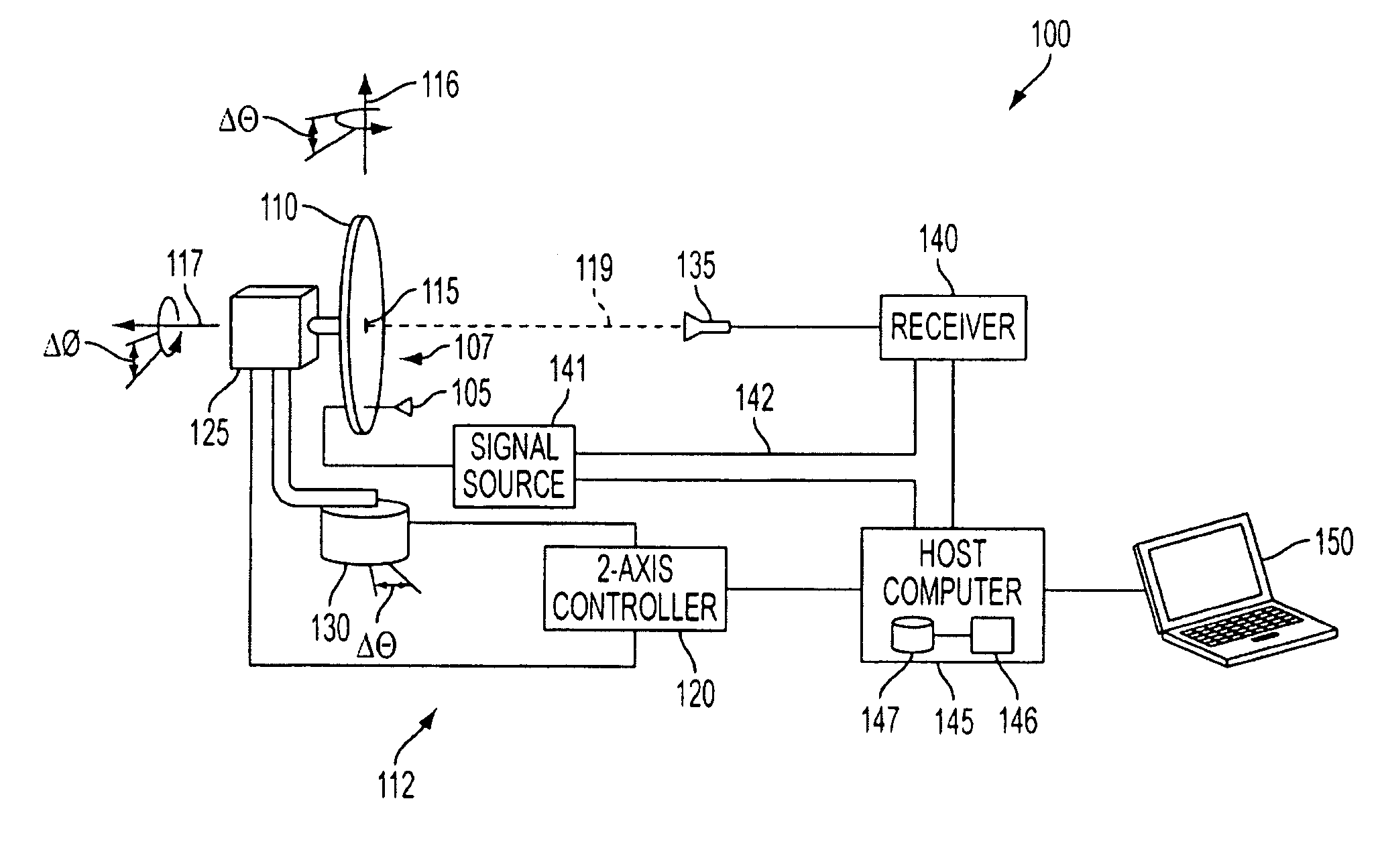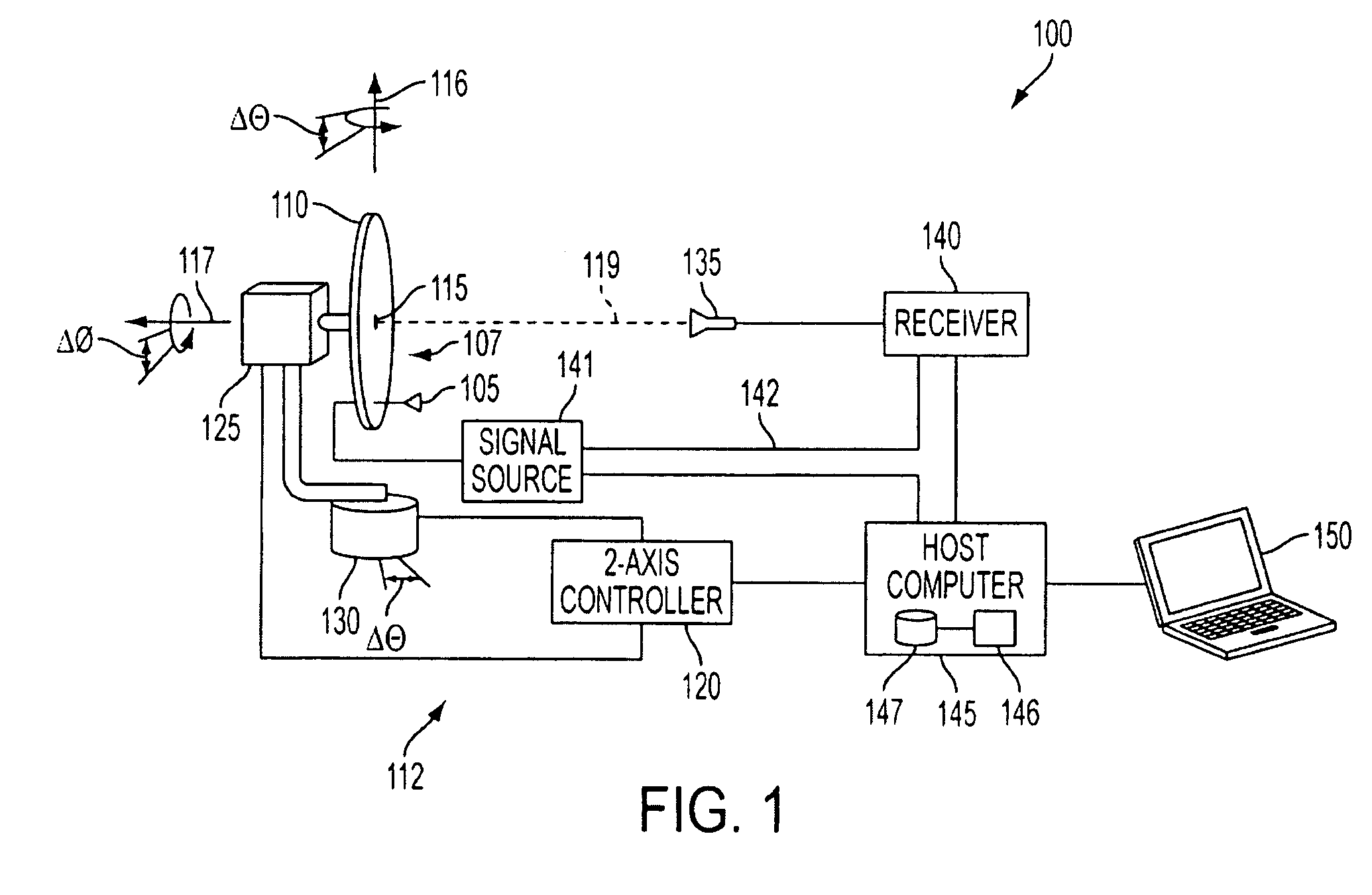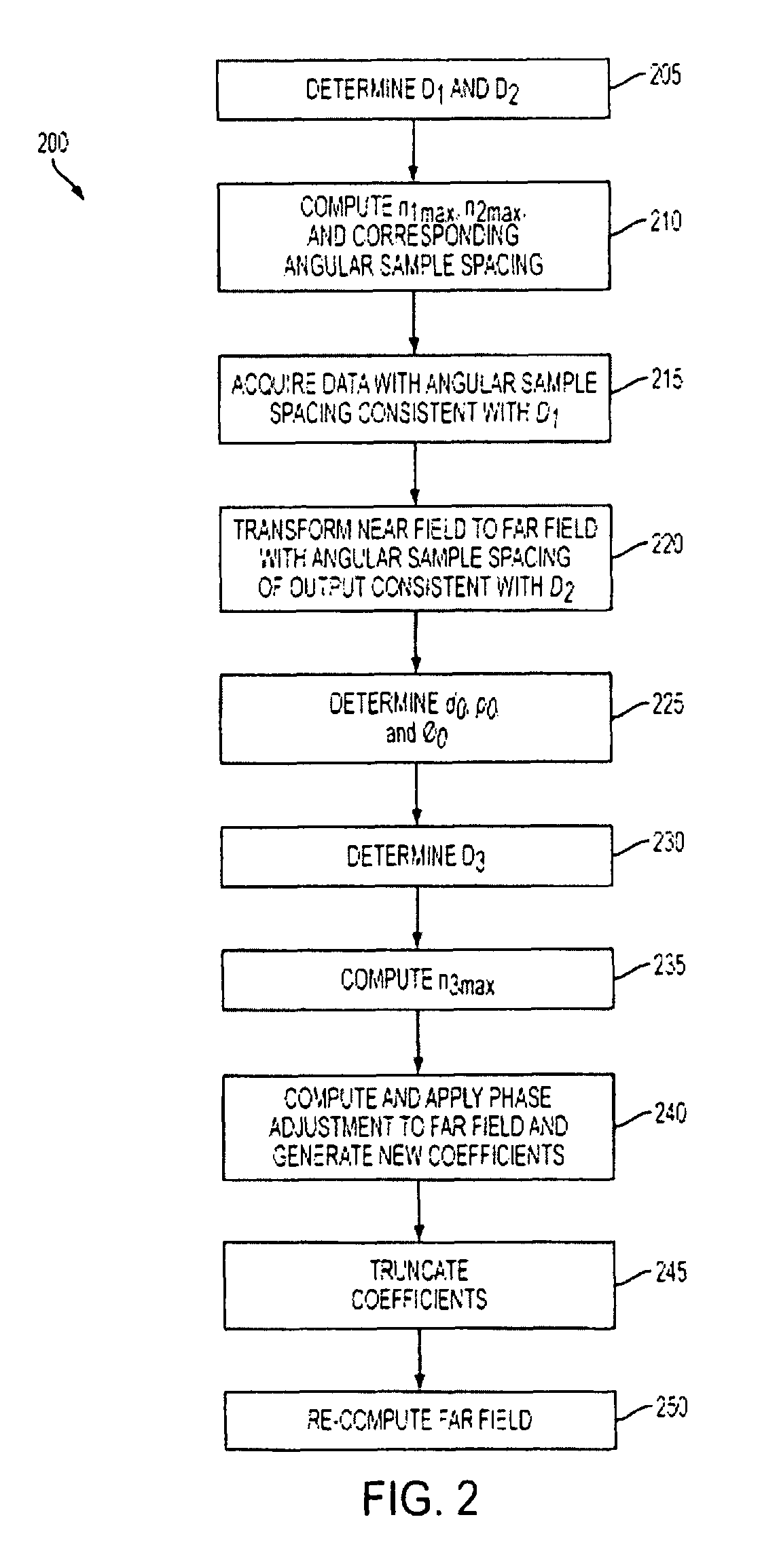System and method for isolating an individual radiation pattern of a given radiator in the presence of other radiators
a technology of radiators and radiation patterns, applied in the direction of antenna radiation diagrams, instruments, antennas, etc., can solve the problems of difficult to measure the near-field radiation pattern of the car with the antenna, art approaches to performing near-field scans, and inability to measure the far-field radiation pattern of an object the size of an automobile. , to achieve the effect of reducing the complexity of the scan apparatus
- Summary
- Abstract
- Description
- Claims
- Application Information
AI Technical Summary
Benefits of technology
Problems solved by technology
Method used
Image
Examples
Embodiment Construction
[0028]FIG. 1 illustrates an exemplary system 100 for determining an antenna far-field radiation pattern according to the present invention. System 100 includes a composite radiator 107, which includes an antenna 105 that is mounted to a ground plane 110. Antenna 105 may be connected to a signal source 141. Ground plane 110 may include the roof of a car, part of the fuselage of an airplane, structure of a phased antenna array, etc. Ground plane 110 may be mounted to a two-axis position control system 112, which controls the orientation of ground plane 110 according to a coordinate system having an origin 115 defined by the crossing of an azimuth axis 116 and a roll axis 117.
[0029]Exemplary system 100 further includes a scan probe 135, which may be a microwave horn antenna. Scan probe 135 may be fixedly mounted substantially along a range axis 119 from origin 115 at a distance that is described below. Accordingly, system 100 may be referred to as a “fixed line of sight” antenna measur...
PUM
 Login to View More
Login to View More Abstract
Description
Claims
Application Information
 Login to View More
Login to View More - R&D
- Intellectual Property
- Life Sciences
- Materials
- Tech Scout
- Unparalleled Data Quality
- Higher Quality Content
- 60% Fewer Hallucinations
Browse by: Latest US Patents, China's latest patents, Technical Efficacy Thesaurus, Application Domain, Technology Topic, Popular Technical Reports.
© 2025 PatSnap. All rights reserved.Legal|Privacy policy|Modern Slavery Act Transparency Statement|Sitemap|About US| Contact US: help@patsnap.com



